The most preferred method for ventilating large spaces is natural ventilation. Especially in large-square-meter places such as industrial facilities, warehouses, and animal shelters, openings in roofs and walls are used to ensure airflow. This method minimizes energy consumption, providing a cost advantage while allowing continuous circulation of fresh air in the environment.
Besides natural ventilation, mechanical systems are also widely used; however, in large-scale structures, the most efficient solution is usually systems that utilize wind and pressure differences. Mechanical solutions are mostly preferred as a supplement and are activated especially in environments with high humidity, dust, or harmful gases. In this way, both air quality is maintained and the health of employees is safeguarded.
Which method will be used is determined by the size of the area, the type of activity, and the climatic conditions. A properly planned ventilation system not only increases indoor comfort but also makes a significant contribution in terms of energy savings and production efficiency. Therefore, a detailed analysis of needs at the design stage provides both an economical and healthy environment in the long term.
Most Preferred Ventilation Methods in Large Areas
Ventilation methods preferred in large areas are critical both for maintaining a healthy environment and ensuring energy efficiency. Particularly in large-volume structures such as warehouses, factories, and animal shelters, solutions that allow natural airflow are among the most commonly used methods. Through roof windows, sidewall openings, and strategically placed air ducts, continuous circulation of fresh air is ensured while accumulated polluted air is expelled.
However, natural ventilation alone may not be sufficient. In production areas where dust, humidity, or harmful gases are concentrated, mechanical systems come into play. At this point, large fan–blade ventilation solutions stand out as a highly effective option. Thanks to their high airflow rate, these systems renew the air in a large area in a short time; they protect worker health and help prevent disruptions in production processes, especially in industrial facilities.
Modern ventilation solutions, with proper planning and appropriate device selection, both save energy and reduce operating costs in the long run. To increase efficiency in large areas, natural methods are generally used together with mechanical systems. By placing large industrial fans at strategic points, air circulation becomes continuous and balanced, resulting in a healthy, safe, and productive working environment.
Advantages of Natural Ventilation Systems
The advantages of natural ventilation systems stand out by providing clean airflow in large areas while offering energy savings. Through vents or windows opened in roofs and sidewalls, air is driven from inside to outside by pressure differences and the effect of wind. Thus, continuous air renewal occurs without the need for extra energy. Especially in large-volume structures, this method offers a solution that is both economical and environmentally friendly.
Advantages of Natural Ventilation Systems
- Provides continuous air circulation without energy consumption
- Reduces costs, delivering savings to businesses in the long term
- Effectively expels accumulated humidity, dust, and polluted air
- Prevents noise pollution thanks to quiet operation
- Creates a healthier and more comfortable environment for employees
Ventilation achieved through natural methods yields efficient results especially in industrial facilities, warehouses, and areas used for animal husbandry. When properly designed, it not only improves air quality but also creates an environment that supports productivity. In today’s climate of rising energy costs, this method has become one of the most preferred sustainable solutions for businesses.
Mechanical Ventilation Solutions and Areas of Use
Mechanical ventilation solutions are among the most effective methods to meet the need for clean air in large and enclosed spaces. These systems, which come into play where natural airflow is insufficient, provide controlled air circulation, refreshing the environment and playing a critical role in occupational safety. They are particularly preferred intensively in industrial facilities.
One of the most important advantages of these systems is that the airflow can be fully controlled. Parameters such as humidity level, temperature, and particle concentration can be adjusted. Thus, both employee comfort is ensured and production processes are protected. They are indispensable especially in areas where hygiene is paramount, such as food production plants and pharmaceutical factories.
Mechanical ventilation solutions are not limited to industrial areas. They are also widely used in many buildings of daily life such as shopping malls, parking garages, hospitals, and offices. Thanks to these systems, bad odors and harmful gases that may form in enclosed spaces are expelled quickly.
Large fan–blade systems are among the most effective solutions preferred especially in large-volume areas. With their high airflow rate, they quickly renew the air and establish a balanced flow in the environment. This both saves energy and creates a healthy working environment.
When mechanical ventilation is installed with proper design and quality equipment, it becomes a long-term investment. Supported by regular maintenance, these systems both reduce businesses’ energy costs and provide a more sustainable contribution to the environment. For this reason, in modern structures they are among the most frequently used solutions together with natural methods.
Why Are Large Fan–Blade Ventilation Systems Preferred?
Large fan–blade ventilation systems stand out in large areas for providing powerful airflow with low energy consumption. Especially in enclosed environments such as industrial facilities, warehouses, and animal shelters, they quickly renew the air to create a healthy and comfortable working environment. Offering high efficiency, these systems allow effective ventilation of large square meters with a single device.
Reasons for Preferring Large Fan–Blade Ventilation Systems
- Provides strong air circulation in large-volume areas
- Offers a cost advantage by reducing energy consumption
- Effectively expels humidity, dust, and harmful gases
- Creates comfort in production and living spaces thanks to quiet operation
- Offers trouble-free use for many years thanks to its durable structure
The most important factor in preferring these systems is their ability to provide homogeneous air distribution in large areas. Thanks to fans placed at strategic points, coolness, freshness, and continuous air renewal are achieved. These solutions, advantageous in terms of both occupational safety and efficiency, have become one of the top options considered by businesses in modern ventilation projects.
Which Ventilation Method Is More Efficient in Industrial Plants
In industrial facilities, the efficiency of a ventilation system is determined by the size of the area, the production process, and the types of pollutants generated. Although natural methods are advantageous in terms of energy cost, they are often not sufficient on their own. Therefore, mechanical solutions that can both accelerate airflow and control environmental conditions come to the fore. Ensuring continuous and balanced air circulation is a critical factor for efficiency, especially in facilities with intensive production.
Large fan–blade systems are among the most preferred solutions in industrial areas. With their high airflow rate, they create effective air circulation over large areas in a short time. By removing humidity, dust, and harmful gases from the environment, employee health is protected and occupational safety standards are supported. In addition, their low energy consumption provides a long-term cost advantage for businesses.
For efficient ventilation, hybrid systems are applied in most facilities. When structural solutions that provide natural airflow are supported by mechanical fans, both energy savings are achieved and a more controlled environment is created. This approach increases production quality while also creating a sustainable working environment. Thus, businesses both raise employee satisfaction and obtain an environmentally conscious solution.
Energy-Saving Ventilation Systems
Energy-saving ventilation systems reduce operating costs for businesses while also offering an environmentally friendly solution. A properly designed system operates in line with the needs of the environment, preventing unnecessary energy consumption. In this way, a sustainable structure is created and a long-term economic advantage is provided to the enterprise.
Large fan–blade solutions developed with modern technologies provide high airflow with low energy consumption. Especially when used in industrial facilities, warehouses, and large enclosed areas, homogeneous air distribution makes it possible to ventilate more space efficiently with fewer devices. This results in a noticeable reduction in energy costs.
Systems that increase energy efficiency not only offer a cost advantage but also ensure that employees are in a healthier environment. With low carbon emissions, these solutions contribute to the environment and are among the sustainable ventilation methods preferred by many businesses today.
How to Ensure Effective Air Circulation in Warehouses and Factories?
To ensure effective air circulation in warehouses and factories, the structure of the area and its intended use must first be taken into account. In high-ceilinged buildings, natural airflow alone is not sufficient; therefore, supporting systems need to be used. Ensuring a continuous intake of fresh air is of great importance both for employee health and for the protection of products.
Large fan blades are one of the most efficient solutions that accelerate air movement in wide enclosed spaces. With their high airflow rate, they create homogeneous circulation in a short time and maintain the temperature balance of the environment. This is an effective method especially in facilities with intensive production for removing humidity, dust, and harmful gases.
Mechanical ventilation systems are also among the critical solutions that improve air quality in warehouses and factories. Thanks to exhaust fans and fresh air units placed according to need, controlled airflow is provided. This both raises occupational safety standards and contributes to smoother progress of production processes.
Hybrid solutions are often preferred for efficient air circulation. Using natural openings together with mechanical systems reduces energy consumption while guaranteeing a continuous flow of fresh air in the environment. Thus, both employee comfort is increased and operating costs are reduced in warehouses and factories.
Points to Consider When Choosing Ventilation Methods
When choosing ventilation methods, the intended use of the area, its size, and the potential air pollution that may occur must be taken into account. A wrongly chosen system both causes energy loss and fails to provide sufficient air circulation. Therefore, determining the right solution directly affects the efficiency of the business and the health of employees.
Points to Consider When Choosing Ventilation Methods
- Size of the area and ceiling height
- Concentration of dust, humidity, or gases generated during the production process
- Preference for systems that provide energy efficiency
- Possibility of using natural and mechanical solutions together
- Increased efficiency of large fan–blade systems in large-volume areas
- Serviceability for regular maintenance and long-term use advantages
When a suitable ventilation method is selected, both operating costs decrease and a healthy environment is created for employees. Especially in industrial facilities, properly planned systems increase production quality while also contributing to the creation of a sustainable structure.

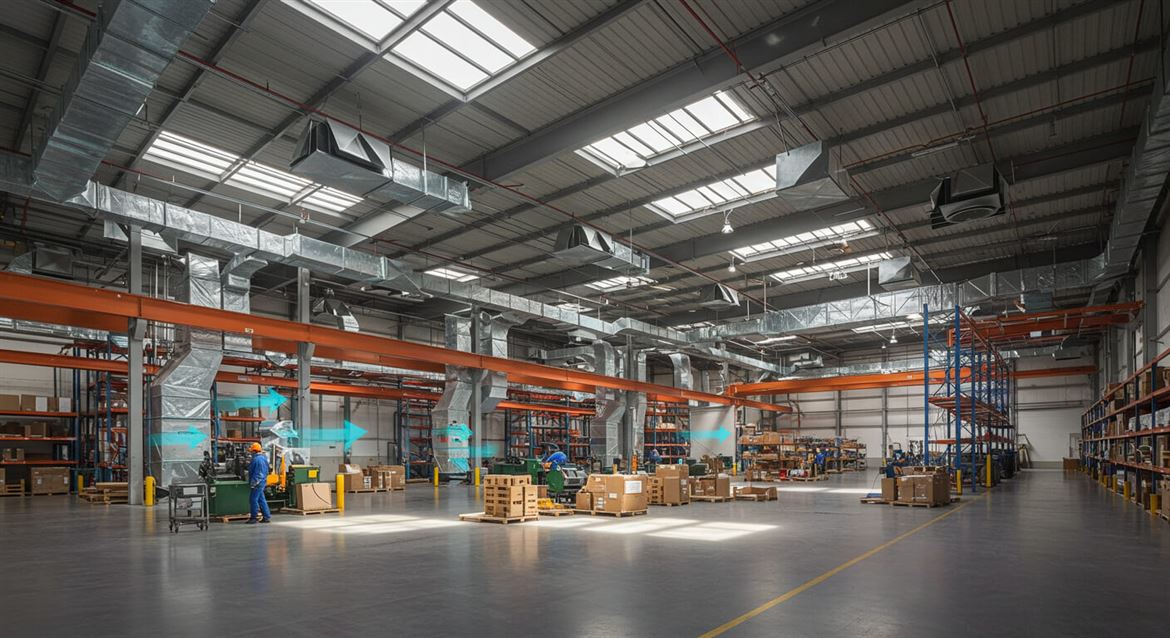
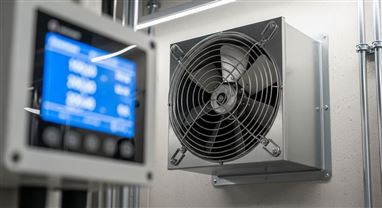

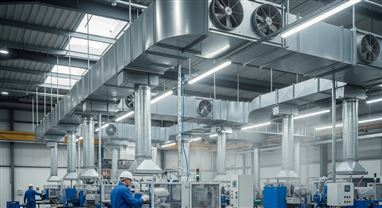
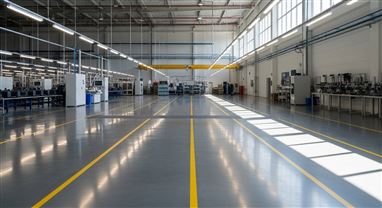

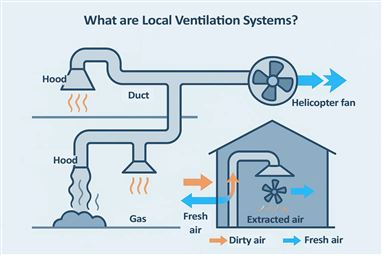



Leave a Comment